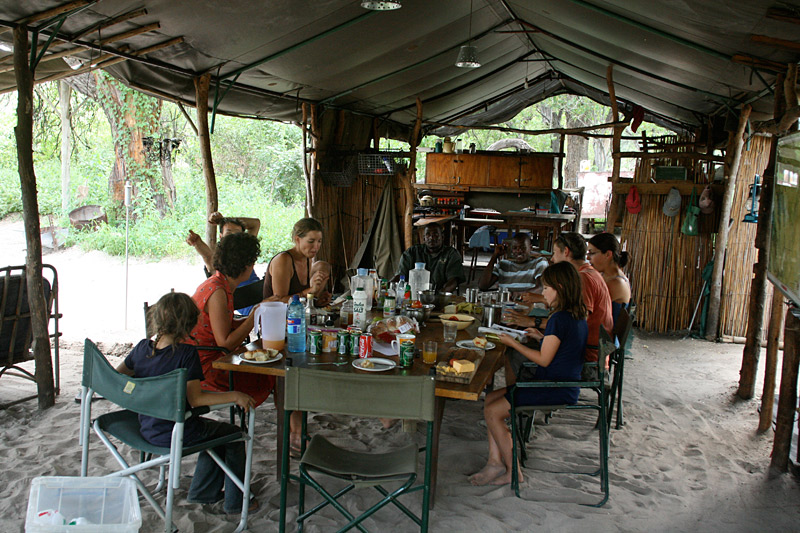Yesterday we visited British scientists Krys Golabeck and Neil Jordan at The Botswana Predator Conservation Trust, based 2 hrs north of Maun at ‘Dog-camp’ in Concession NG34, just below the Moremi National Park. The Trust is one of the longest running conservation research projects in Africa, and one of a handful of its caliber worldwide. Founded as the Botswana Wild Dog Research Project in 1989 by Tico and Lesley McNutt, today it covers all the large carnivore species in Botswana.
The project we visited is focused on the nine packs of wild dogs that roam in Moremi, from Kazikini all the way up to Xakanaka. Wild dogs are a critically endangered species.

There are 2000 – 3000 wild dogs left in Botswana – about half of Africa’s (hence the world’s) population. They are crepuscular (active at dawn and dusk) – admired for their efficient co-operative hunting technique, and loved for their co-operative social behaviour. Each dog’s marking is unique. When approached by humans, they will often approach, curious. Wild dogs inspire – ask Ralph.

The work we heard about focuses on bio-boundaries. It aims at deciphering the complex chemistry of natural scent marks used by free ranging wild dogs to signal territorial boundaries.
At the bush camp they collect and monitor wild dog territorial urine markings, and the laboratory 100 kms south in Maun is working to sample and replicate the scent. The goal is to apply this chemistry to the management of the species in increasingly human dominated, fragmented habitats.
Wild dogs have huge territories – a home range can be more than 1000km2. A pride of lions can be 250km2. Chobe is 11,700 km2. Moremi is 5,000km2. Central Kalahari Game Reserve is 52,800km2 (the second largest national park in the world). In the Central Kalahari, lion reign supreme, and they attack wild dogs whenever encountered. There are hardly any dogs left there.
For obvious reasons, the larger the required home range, the more vulnerable dogs are to a decrease or fragmentation in territory. For example, if the corridor between Moremi and Chobe parks (currently hunting concessions where dogs can roam) becomes used for farming, (not impossible – Botswanan ministers apparently own a large percentage of the country’s cattle) it would be catastrophic for wild dogs.
When the dogs are forced out of parks/protected areas, they encounter humans (and disease). Usually wild dogs have a moving territory and so whilst they may kill livestock, they move enough to spread their hunting across many farms. They are not be a big threat to any individual farmer, and not easily trackable. They are however, very vulnerable to farmers when they stay in a den for an extended period, which they do for the first 2 or 3 months of their pups’ lives.
The future of wild dogs is tragically precarious. But one thing we can know for certain – without organisations like the BPCT spearheading research and conservation, our great grandchildren, maybe even our grandchildren, will only find wild dogs in zoos.
The words tragically precarious apply to so many of these extraordinary animals. Rhinos too, especially black rhinos. How privileged you are to have seen and spent some time with these beautiful creatures – and they are, you know, with their large ears, alert faces and ridiculously colourful markings that look as they’ve been splattered on with a paint brush.
Long may they run wild.